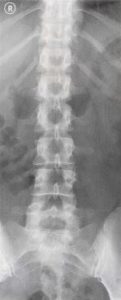

In total, the consensus process included 9 meetings and 20 hours of video conferences.Īs regards existing studies with highest level of evidence, a clear recommendation regarding treatment (operative vs conservative) or regarding type of surgery (posterior vs anterior vs combined anterior-posterior) cannot be given. Members of the expert group were recruited from all over Germany working in hospitals of all levels of care. It was redone in 2017 based on systematic literature review, including new AOSpine classification. The project was initiated in September 2008 and published in Germany in 2011. The aim of this study was to establish recommendations for treatment of thoracolumbar spine fractures based on systematic review of current literature and consensus of several spine surgery experts. In many patients, the rods are left in place.Abstract consensus paper with systematic literature review. The curved bones are attached to straight metal rods and gradually there is fusion of the bones and straightening of the spine. Surgery for thoracolumbar scoliosis comprises of spinal fusion with instrumentation, which helps in correcting the curvature and stabilizing the affected segments of the vertebra. Surgery: Surgery is needed in patients with more severe thoracolumbar scoliosis where the curvature is more serious. Massage and practicing yoga can also be beneficial. Other treatment options for thoracolumbar scoliosis include exercises, which increase flexibility and strength of the back. However, braces should be avoided in cases where thoracolumbar scoliosis develops as result of muscle weakness, as wearing braces for a long period of time can lead to further weakness of the back muscles. Brace can be worn by the patient when doing their regular physical activities. Treatment of thoracolumbar scoliosis depends on the causes and as well as the severity of the curvature.Įxercises to Treat Thoracolumbar Scoliosis: Treatment for thoracolumbar scoliosis which develops due to weak muscle control is focused of increasing the strength of the specific vital group of muscles through strengthening exercises.īraces: Wearing a custom-molded back brace, which applies three-point pressure to the spinal curvature, is also beneficial as it helps in slowing the progression of the curvature of thoracolumbar scoliosis and helps in stabilizing the spine and straightening the curve. In thoracolumbar scoliosis the spinal curvature is at the highest point in the region between the thoracic and lumbar segments. The thoracic segment of the spine is also referred to as the upper back and lumbar spinal area is also known as the lower back. Thoracolumbar scoliosis usually presents with the curve towards the right side. There are some cases of thoracolumbar scoliosis for which the cause is not found, this is termed as idiopathic thoracolumbar scoliosis.

Thoracolumbar scoliosis can also be of neuromuscular nature occurring as a secondary condition and developing in consequence to other medical conditions, such as cerebral palsy or spina bifida. Thoracolumbar scoliosis is commonly detectable at birth. this condition develops in utero during the third to sixth week of pregnancy. Thoracolumbar scoliosis is usually a congenital condition, i.e. Thoracolumbar scoliosis is a medical condition and is a type of scoliosis where the patient has an abnormal curvature of the spine in the thoracic and lumbar segments of the spine, which contains the lower thoracic vertebrae (mid-back) and upper lumbar vertebrae (lower back).


 0 kommentar(er)
0 kommentar(er)
